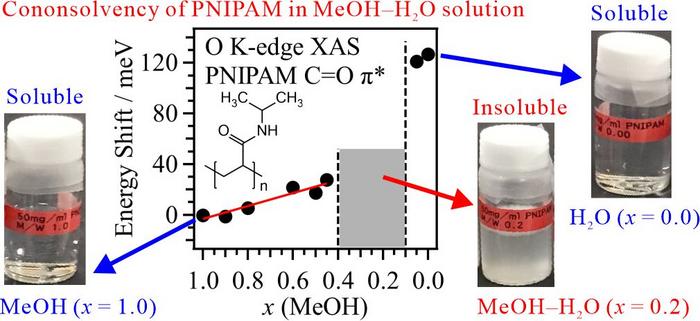Early Diabetes Detection Made Easier by Monitoring Blood Sugar Levels
A groundbreaking development in the realm of diabetes research has emerged from the University of Tokyo, where scientists have pioneered a novel noninvasive approach to detect early disruptions in blood glucose regulation. Utilizing continuous glucose monitoring (CGM), a wearable technology traditionally used for diabetes management, this innovative method promises to fundamentally shift the paradigm of […]


A groundbreaking development in the realm of diabetes research has emerged from the University of Tokyo, where scientists have pioneered a novel noninvasive approach to detect early disruptions in blood glucose regulation. Utilizing continuous glucose monitoring (CGM), a wearable technology traditionally used for diabetes management, this innovative method promises to fundamentally shift the paradigm of diabetes risk assessment. By capturing real-time, dynamic fluctuations in glucose levels, the technique offers a highly sensitive and practical alternative to conventional diagnostic methods that rely heavily on invasive blood draws and episodic testing.
Diabetes mellitus, often described as a “silent epidemic,” continues to impose significant health burdens globally, with its prevalence escalating rapidly in both developed and developing nations. Early recognition of impaired glucose regulation, a critical intermediate state preceding the manifestation of Type 2 diabetes, is crucial for timely intervention and prevention of disease progression. However, traditional diagnostic tools, including fasting blood glucose and hemoglobin A1c (HbA1c) measurements, suffer from limitations intrinsic to their snapshot nature, as they fail to capture the intricate temporal patterns of glucose dynamics under everyday physiological conditions.
The research team, led by Professor Shinya Kuroda from the University of Tokyo’s Graduate School of Science, rigorously evaluated CGM data from 64 individuals with no prior diabetes diagnosis. The study leveraged CGM’s capacity to provide continuous, high-resolution glucose metrics, enabling an unprecedented insight into the glycemic patterns indicative of early metabolic dysregulation. Their multidisciplinary methodology integrated oral glucose tolerance tests (OGTT) and hyperinsulinemic-euglycemic clamp tests—considered gold standards for glucose metabolism evaluation—to robustly validate the CGM-derived indices.
A central innovation in their analysis involved the identification and application of an index termed AC_Var, representing the coefficient of variation of glucose level fluctuations. Remarkably, this metric exhibited a strong correlation with the disposition index, a well-established composite marker reflecting pancreatic beta-cell function adjusted for insulin sensitivity. This correlation underscores AC_Var’s potential as a surrogate biomarker, effectively capturing the interplay between insulin action and secretion dynamics that underlie glucose homeostasis.
Advancing beyond single-parameter assessment, the researchers developed an integrative model combining AC_Var with the standard deviation of glucose readings obtained from CGM. This composite approach demonstrated superior predictive performance relative to traditional diabetes markers, outperforming fasting glucose, HbA1c, and OGTT results in forecasting impaired glucose handling capacity. The implications of this are profound, as it suggests the potential for earlier and more accurate identification of individuals at heightened risk of developing diabetes, even before conventional diagnostics would flag abnormalities.
Of particular note, the CGM-based method revealed subtle glycemic irregularities in participants whom conventional tests had classified as normoglycemic. This sensitivity to early metabolic perturbations opens a critical window for clinicians to implement lifestyle or pharmacologic interventions aimed at halting or reversing progression towards overt diabetes. Early detection not only mitigates the burden of disease but also holds promise for reducing associated complications that manifest later, including cardiovascular morbidity.
The study further extended its clinical relevance by demonstrating that their CGM-derived indices correlated more strongly with complications such as coronary artery disease than traditional glycemic measures. This finding elevates the utility of their approach from mere early detection to potential prognostic stratification, enabling more tailored patient management strategies that address both diabetes risk and its sequelae.
To maximize accessibility and clinical translation, the research team has developed a user-friendly web application. This platform empowers both healthcare practitioners and patients to calculate these sophisticated CGM-based indices rapidly, fostering broader adoption of the technique. By democratizing access to advanced glucose regulation assessment tools, this innovation could reshape preventive strategies at a population level, ultimately curbing the diabetes epidemic.
This research not only reflects a technological leap but also embodies a conceptual evolution in how glucose regulation is understood and monitored. Continuous glucose data, once primarily the domain of diabetic management, is now harnessed to glean insights into metabolic states of health, offering a dynamic biomarker landscape that transcends static snapshots. The integration of machine learning algorithms and mathematical modeling in analyzing CGM data further enriches the precision and applicability of this method.
Professor Kuroda emphasized that the future of diabetes prevention hinges on innovations like these, which reconcile accuracy, convenience, and accessibility. The ability to identify early dysfunction in glucose metabolism without invasive procedures could transform screening paradigms, especially in resource-limited settings where frequent blood sampling is impractical. This approach also aligns well with emerging trends in personalized medicine, where continuous physiological monitoring offers tailored risk assessments and interventions.
Published in Communications Medicine in April 2025, this study sets a new benchmark for glucose regulation diagnostics. It challenges existing protocols and advocates for a shift towards leveraging real-time physiological data to inform clinical decision-making. As the prevalence of diabetes continues to climb unabated, such advancements are vital for mounting an effective response to this global health crisis.
The implications of this work extend beyond diabetes alone; they open avenues for understanding complex metabolic diseases through continuous monitoring frameworks. With ongoing refinement and validation in larger, diverse cohorts, CGM-derived indices may become integral components of metabolic health assessment across the spectrum of disorders characterized by impaired glucose homeostasis.
In summary, the University of Tokyo’s novel CGM-based method represents a transformative stride towards earlier, less invasive, and more accurate detection of impaired glucose regulation. This technology holds promise not only for improving individual patient outcomes but also for influencing public health strategies aimed at curbing the rising tide of diabetes worldwide. By harnessing continuous data streams and sophisticated analytics, this research exemplifies the future of metabolic disease management.
—
Subject of Research: People
Article Title: Improved Detection of Decreased Glucose Handling Capacities via Continuous Glucose Monitoring-Derived Indices
News Publication Date: 22-Apr-2025
References: Hikaru Sugimoto, Ken-ichi Hironaka, Tomoaki Nakamura, Tomoko Yamada, Hiroshi Miura, Natsu Otowa-Suematsu, Masashi Fujii, Yushi Hirota, Kazuhiko Sakaguchi, Wataru Ogawa, and Shinya Kuroda, “Improved Detection of Decreased Glucose Handling Capacities via Continuous Glucose Monitoring-Derived Indices,” Communications Medicine: April 22, 2025, DOI: 10.1038/s43856-025-00819-5
Image Credits: Shinya Kuroda, The University of Tokyo
Keywords: continuous glucose monitoring, diabetes early detection, impaired glucose regulation, CGM-derived indices, glucose fluctuations, disposition index, noninvasive diagnostics, metabolic risk assessment, diabetes prevention
Tags: continuous glucose monitoring technologydiabetes risk assessment methodsdynamic glucose monitoringearly diabetes detectionglucose regulation assessmentimpaired glucose regulation recognitionnoninvasive blood sugar monitoringreal-time glucose fluctuationstraditional diagnostic limitationsType 2 diabetes preventionUniversity of Tokyo diabetes researchwearable health technology
What's Your Reaction?

































